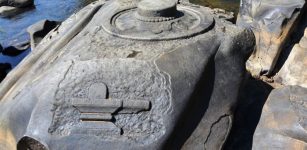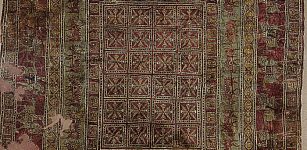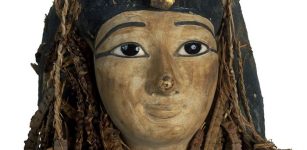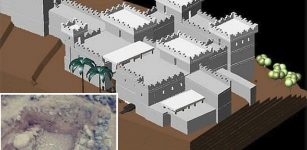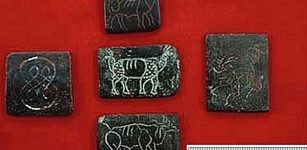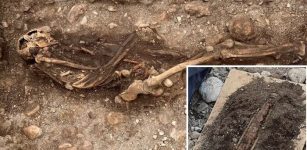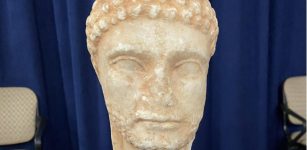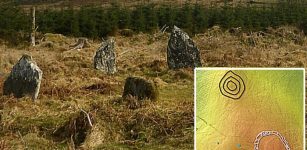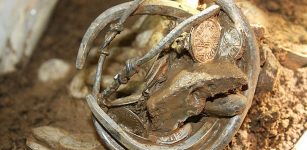Mysterious Lost Tartessian Civilization And Its Ancient Tablet With Paleo-Hispanic Alphabet
Conny Waters - AncientPages.com - The recent discovery of a 2,400-year-old tablet in Spain has shed light on an ancient lost civilization. The 8-inch slate, unearthed at the Casas del Turuñuelo archaeological site, appears inscribed with an alphabetic sequence of 21 signs, potentially belonging to the lost Paleo-Hispanic society known as Tartessos.
A remarkable archaeological discovery has been made in Spain – a 2,400-year-old tablet bearing an inscribed alphabetic sequence of 21 signs. This tablet predates the famous Rosetta Stone by a staggering 400 years, making it a significant find in the study of ancient writing systems. The image above illustrates an effort to extrapolate and reconstruct the missing pieces of the alphabet based on the inscriptions found on this newly discovered tablet.
Credit: JFiJ / CSIC
According to the Spanish National Research Council (CSIC), the tablet also depicts a framework on which figures of warriors were found, suggesting the existence of an advanced civilization that mysteriously disappeared. The site is believed to have been a sanctuary or temple for the Tartessian people.
Researchers from the Institute of Archeology of Mérida (IAM), a joint center of the CSIC and the Government of Extremadura, are currently studying the series of signs inscribed on the slate tablet. Preliminary interpretations indicate that it could be an alphabet from a southern Paleo-Hispanic script, providing valuable insights into this ancient civilization's writing system and culture.
This remarkable discovery predates the Rosetta Stone by four centuries and offers a unique opportunity to unravel the mysteries surrounding the Tartessian society, their language, and their eventual disappearance from the region.
The Tartessian culture occupied the southwestern Iberian Peninsula between the 9th and 5th centuries B.C. These people were skilled at silver, tin, and iron metalworking, making them wealthy. The Tartessians were a prosperous civilization from a blend of indigenous inhabitants and Greek and Phoenician settlers. However, the exact nature of their sociopolitical structure remains a subject of debate. Scholars are uncertain whether they constituted a large city-state, a full-fledged nation, or an entity somewhere in between.
The tablet's carvings, dating back to approximately 600 to 400 B.C., exhibit various illustrations. Preliminary photographs reveal repeated and overlapping depictions of faces, geometric shapes, and a striking combat scene featuring three warriors. Archaeologists hypothesize that this tablet served as a sketchbook, providing a unique glimpse into the artistic practices and visual narratives of the era. Credit: JFiJ / CSIC
One intriguing theory suggests that a catastrophic event, such as an earthquake or a tsunami, may have contributed to their eventual demise. Despite the uncertainties surrounding their organization and fate, the Tartessians' existence sheds light on the intricate cultural interplay that shaped ancient Iberian societies. Not much is known about the culture, but some years ago scientists unearthed five remarkable life-sized stone busts that reveal the faces of the ancient Tarteso people for the first time.
According to CSIC researcher Esther Rodríguez González, the tablet, dating back to around 600-400 BC, features intricate carvings of faces, geometric shapes, and a combat scene involving three warriors. Notably, the volume of information contained within the tablet is remarkably extensive.
2,500-year-old stone sculptures reveal for the first time the faces of the Tartesian culture. Credit: Higher Council for Scientific Research (CSIC)
Archaeologists have theorized that the tablet was a sketchbook or practice surface for artisans, allowing them to refine their skills before engraving finished products on more valuable materials like gold, ivory, or wood.
The tablet's carvings resemble the Paleo-Hispanic written languages, which are currently divided into two distinct styles or families—one common to the northeast of Spain and another prevalent in the southern region. Before this discovery, archaeologists had only encountered fragments of the Southern style, leading them to speculate about the existence of a more comprehensive system.
University of Barcelona researcher Joan Ferrer i Jané examined the tablet and noted its compatibility with known sequences from two previous southern dialect tablets from the same period. Significantly, the Turuñuelo or Guareña alphabet depicted on the new tablet showcases the first 10 alphabet signs, also found at the Espanca archaeological site in Castro Verde, Portugal.
Excavations at Casas del Turuñuelo, the site where the tablet was discovered, have been ongoing for at least six years, as confirmed by Spanish National Research Council (CSIC) officials. Credit: Higher Council for Scientific Research (CSIC)
“This alphabet has 27 signs and is the only complete one we know to date. Another was found in the excavation of Villasviejas del Tamuja (Cáceres) but it is very fragmented, it only has some central signs. Therefore, Guareña would be the third and provide much information,” says Ferrer in a press release.
The broken state of the tablet has unfortunately obscured some of its alphabet, but Ferrer i Jané hopes to piece it together with other artifacts from the region. The scientist explains that at least 6 signs or letters would have been lost in the split area, but if the tablet were completely symmetrical and the signs occupied three of the four sides, it could reach up to 32 signs.
See also: More Archaeology News
Additionally, the lost signs or letters could reach up to eleven or more if a possible sign, "Tu," isolated on the side, were part of the alphabet. Ferrer i Jané notes that it's a shame the final part of the alphabet has been lost since that's where the most pronounced differences tend to be. As a researcher whose work combines information software engineering and ancient languages, he believes those missing letters could reveal the tablet as a brand new sister language to the other partially understood southern Paleo-Hispanic type or family.
This remarkable find may provide evidence of an independent, brand-new Paleo-Hispanic southern alphabet, offering invaluable insights into the region's ancient writing systems and cultural heritage.
Written by Conny Waters - AncientPages.com Staff Writer







